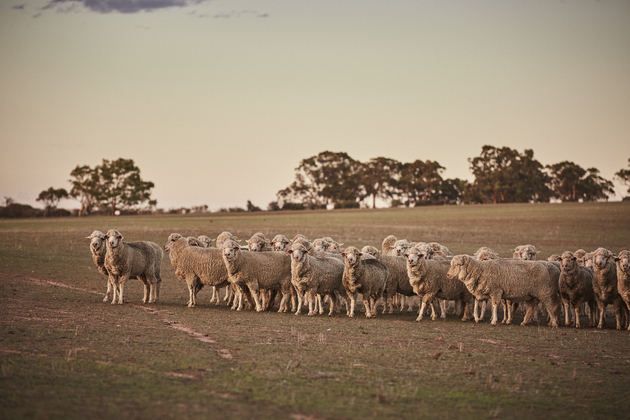Feed budgeting 101

Do you need a refresher on feed budgeting or perhaps you’re just learning how to conduct a feed budget? Then read ahead!
John Young from Farming Systems Analysis Service highlighted in our recent ‘Tackling Tough Times’ webinar the importance of woolgrowers conducting a feed and water budget through to spring, including different scenarios for when supplementary feeding stops i.e. different timings of the break of season. Under the current market and seasonal conditions, it is essential that supplementary feed is being utilised efficiently.
For more tips on how to tackle this tough year, refer to our article ‘Strategies and tactics for the season’ in our current newsletter (Autumn 2024).
Conducting a feed budget for ewes
There are four steps in conducting a feed budget for ewes:
Step 1. Work out how much energy the ewes need, based on their weight, condition score and stage of the reproductive cycle.
Step 2. Work out how much energy the ewes can eat from the pasture in their paddock, based on feed-on-offer (FOO) and digestibility.
Step 3. Work out if the ewes are gaining or losing weight.
Step 4. Work out how much you need to feed to meet the energy deficit, if there is one.
These steps are completed using the Feed Budget Tables published by LifetimeWool. There are three tables available for ewes. You should use whichever table best reflects your current conditions to calculate a feed budget.
You can find the Feed Budget Tables for ewes here:
Conducting a feed budget for weaners
There are a couple of extra steps required when conducting a feed budget for weaners:
- If not already known, calculate the standard reference weight of your mature ewes using the instructions available here. This is the average weight of your mature ewes when not pregnant, bare-shorn and in condition score 3.
- You will need the liveweight of your weaners at 7 or 10 months of age, whichever you have now reached depending on your time of lambing, to determine the required growth rate to reach their target weight at 18 months of age i.e. 80% of their standard reference weight.
The Feed Budget Tables for weaners are available here:
Once you have worked out the target growth rate for your weaners, the ‘Feed Budget Tables for Merino Weaners’ are used to determine how much supplementary feed is required based on the current weight of the weaners, the target growth rate and the energy content of the supplementary feed. You will then need to determine if the crude protein supplied from this amount of supplementary feed is adequate to meet the minimum crude protein percentage from the table. If the crude protein content is below the required level, you will need to fine tune the ration to ensure that the target growth rates can be met. Note that the Feed Budget Tables for Merino Weaners assume that there is no nutrition supplied from pasture, so you will consider how much energy and protein is being supplied from the pasture/stubble and adjust the amount of supplementary feed accordingly.
Consider attending AWI’s Winning With Weaners workshop if you would like to improve your weaner management, including understanding the nutritional requirements of weaners and setting target weights. Keep an eye out for workshop dates in the coming months. Alternatively, reach out to the AWI Extension WA team to register your interest.
Pasture assessment
Having a good gauge of the availability and quality of pasture in your paddocks is important when conducting a feed budget to ensure that you can calculate accurate estimates of the amount of supplementary feed required. It also allows you to allocate sheep with greater nutritional demands to better pastures.
Feed-on-offer (FOO) is the quantity of pasture available in the paddock, measured as kilograms of dry matter per hectare (kg DM/ha). Some of the key measures of pasture quality are digestibility, energy and protein content. Digestibility declines as pastures mature, meaning that less of the feed consumed is retained by the animal to be used for production and more is passed out in the faeces. Pastures with higher digestibility will have higher energy. Energy content is normally the limiting factor with pastures however low protein content of dry pastures may limit animal performance, especially for young animals.
For further information on pasture quality, assessing feed-on-offer (FOO) and to search the FOO library.
A guide for assessment of FOO when pastures are in the green phase can also be accessed here.
Utilising feed efficiently
It is recommended that you have your supplementary feeds tested to determine their quality as grain, hay and silage can vary considerably in dry matter percentage and nutrient content. This means that accurate feed budgets can be calculated and you can ensure the most economical feeds are purchased and feed is fed efficiently. The key values from a feed analysis report are dry matter percentage, metabolisable energy and crude protein. Pastures may also be analysed for quality.
The Department of Primary Industries and Regional Development have a tool available to determine which supplementary feed provides you the cheapest source of energy and protein. The tool can be found here.
Amy Lockwood, AWI Extension WA






.jpg/f3b61a58084e11efa7a8521f032f84db)
